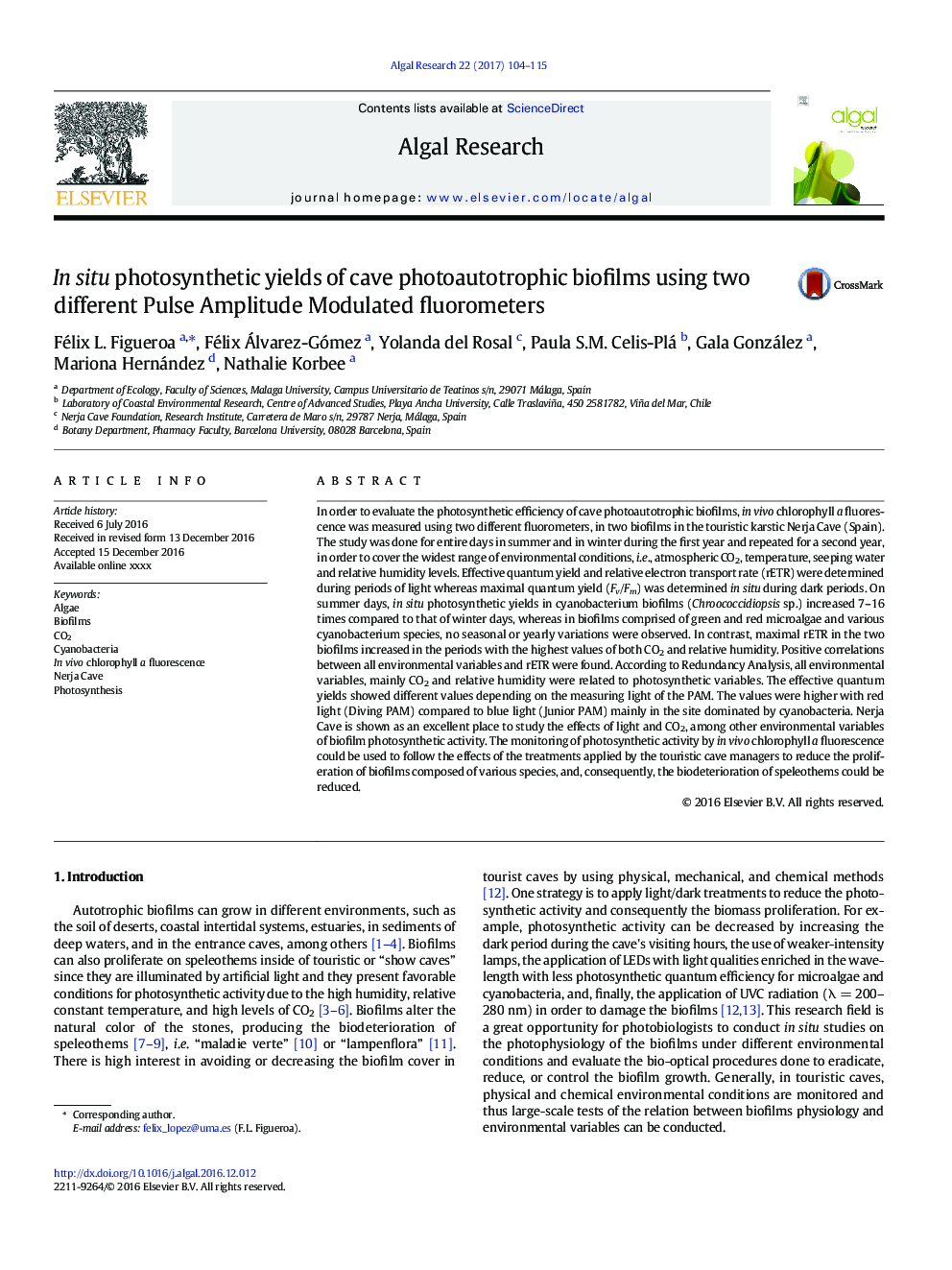| کد مقاله | کد نشریه | سال انتشار | مقاله انگلیسی | نسخه تمام متن |
|---|---|---|---|---|
| 5478433 | 1521810 | 2017 | 12 صفحه PDF | دانلود رایگان |
عنوان انگلیسی مقاله ISI
In situ photosynthetic yields of cave photoautotrophic biofilms using two different Pulse Amplitude Modulated fluorometers
ترجمه فارسی عنوان
در فتوسنتزی درونی از فیلم های عکس اتوتروفی غار با استفاده از دو فلورومتر مدولاجزهای با امپدانس پالس
دانلود مقاله + سفارش ترجمه
دانلود مقاله ISI انگلیسی
رایگان برای ایرانیان
کلمات کلیدی
موضوعات مرتبط
مهندسی و علوم پایه
مهندسی انرژی
انرژی های تجدید پذیر، توسعه پایدار و محیط زیست
چکیده انگلیسی
In order to evaluate the photosynthetic efficiency of cave photoautotrophic biofilms, in vivo chlorophyll a fluorescence was measured using two different fluorometers, in two biofilms in the touristic karstic Nerja Cave (Spain). The study was done for entire days in summer and in winter during the first year and repeated for a second year, in order to cover the widest range of environmental conditions, i.e., atmospheric CO2, temperature, seeping water and relative humidity levels. Effective quantum yield and relative electron transport rate (rETR) were determined during periods of light whereas maximal quantum yield (Fv/Fm) was determined in situ during dark periods. On summer days, in situ photosynthetic yields in cyanobacterium biofilms (Chroococcidiopsis sp.) increased 7-16 times compared to that of winter days, whereas in biofilms comprised of green and red microalgae and various cyanobacterium species, no seasonal or yearly variations were observed. In contrast, maximal rETR in the two biofilms increased in the periods with the highest values of both CO2 and relative humidity. Positive correlations between all environmental variables and rETR were found. According to Redundancy Analysis, all environmental variables, mainly CO2 and relative humidity were related to photosynthetic variables. The effective quantum yields showed different values depending on the measuring light of the PAM. The values were higher with red light (Diving PAM) compared to blue light (Junior PAM) mainly in the site dominated by cyanobacteria. Nerja Cave is shown as an excellent place to study the effects of light and CO2, among other environmental variables of biofilm photosynthetic activity. The monitoring of photosynthetic activity by in vivo chlorophyll a fluorescence could be used to follow the effects of the treatments applied by the touristic cave managers to reduce the proliferation of biofilms composed of various species, and, consequently, the biodeterioration of speleothems could be reduced.
ناشر
Database: Elsevier - ScienceDirect (ساینس دایرکت)
Journal: Algal Research - Volume 22, March 2017, Pages 104-115
Journal: Algal Research - Volume 22, March 2017, Pages 104-115
نویسندگان
Félix L. Figueroa, Félix Álvarez-Gómez, Yolanda del Rosal, Paula S.M. Celis-Plá, Gala González, Mariona Hernández, Nathalie Korbee,
